In the ever-evolving world of automotive engineering, most discussions revolve around engine performance, fuel economy, safety technology, and design aesthetics. Consumers and critics alike are captivated by horsepower ratings, zero-to-sixty times, and driver-assistance features.
Yet, one of the most overlooked but crucial elements of everyday practicality is the tailgate, nestled quietly at the rear of trucks, SUVs, and utility vehicles. It may not receive the same level of attention as a touchscreen infotainment system or turbocharged engine, but ask any pickup truck owner, outdoor enthusiast, or tradesperson, and they’ll tell you just how often they rely on a well-designed tailgate.
A tailgate is more than a hinged panel. It is the interface between vehicle and task, between recreation and responsibility. It’s where construction workers load tools and materials, where parents unload strollers and groceries, where campers sit and relax, and where sports fans tailgate—literally—before the big game.
Whether you’re hauling mulch for a weekend yard project or loading up bikes for a trail ride, your interaction with the vehicle begins and ends at the tailgate. It’s a working surface, a loading platform, and in some cases, a technological marvel all on its own. And yet, while some manufacturers have invested in tailgate innovation, others have seemingly treated it as an afterthought.
The evolution of tailgates tells a story of design philosophies. Some manufacturers, like Ford and Ram, have transformed the tailgate into a multifunctional workbench, complete with steps, clamp zones, and power assists. Others, like Honda, have reimagined the very way a tailgate should open and function.
These innovations are not just clever—they’re reflections of how a vehicle adapts to the real-world needs of its users. A well-designed tailgate can dramatically enhance the utility of a truck or SUV, making it feel like an extension of the driver’s intent. On the other hand, an awkward or poorly executed tailgate can hinder what should be simple tasks, becoming a persistent annoyance that users encounter every time they load or unload.
In this article, we’ll take a close look at five vehicles that get their tailgates absolutely right, combining engineering foresight, user convenience, and clever features that elevate their utility. We’ll also explore the other side of the spectrum—five vehicles with tailgates that miss the mark, either through design oversights, impractical mechanisms, or choices that prioritize form over function.
This isn’t just about luxury or brand prestige—it’s about usability, ergonomics, and how everyday drivers interact with their vehicles. Our goal is to highlight how something as seemingly simple as a tailgate can dramatically affect the ownership experience. These aren’t just panels of metal on hinges—they are portals to productivity, creativity, and mobility.
In praising the best and critiquing the worst, we hope to inspire both consumers and manufacturers to place more emphasis on this crucial component. After all, if the tailgate is the gateway to your vehicle’s purpose, then it deserves to be treated as more than an afterthought—it deserves to be designed right.
Also Read: 5 Cars That Feel Planted At 80 MPH And 5 That Float Or Wobble
5 Vehicles With Tailgates Designed Right
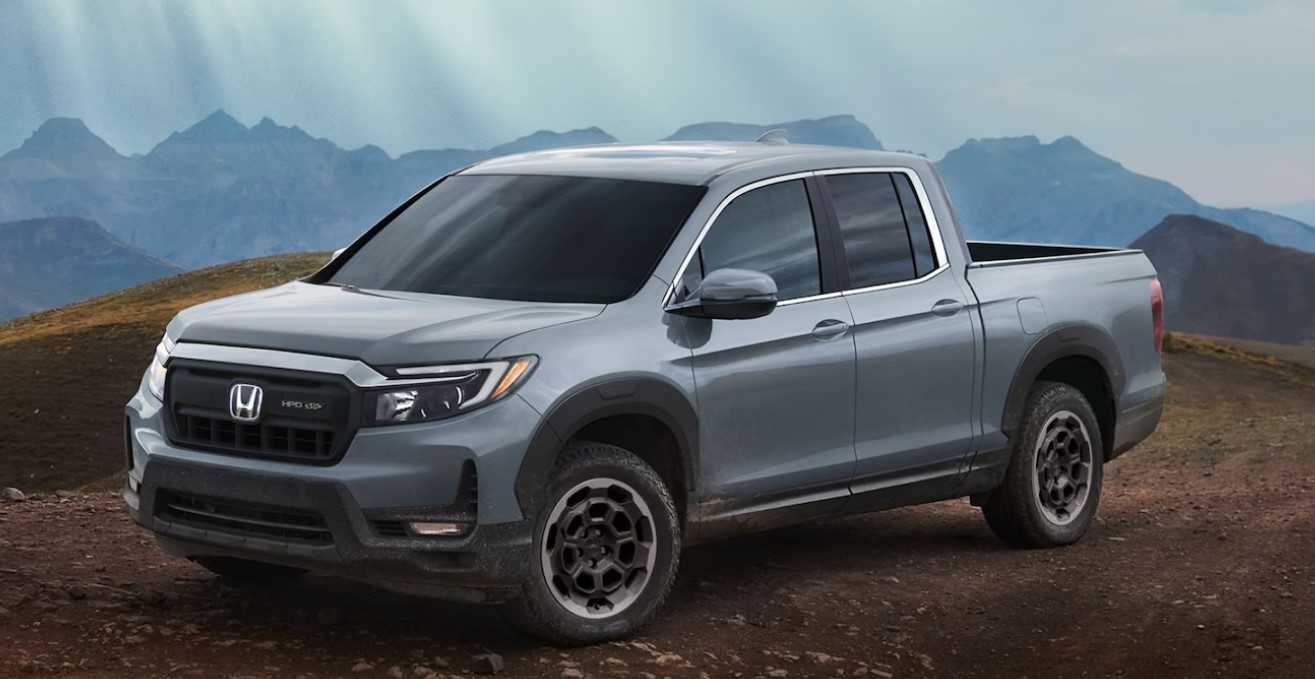
1. Honda Ridgeline – Tailgate Done Right
The Honda Ridgeline stands as a shining example of how thoughtful engineering can elevate a vehicle’s usability, especially when it comes to tailgate design. What sets the Ridgeline apart is its dual-action tailgate—a feature that allows the gate to both fold down like a conventional pickup and swing out sideways like a door.
This seemingly small innovation dramatically improves the user experience. Swinging the gate out to the side enables much easier access to the bed, especially when loading heavier items or reaching further into the cargo area. No more climbing or stretching awkwardly across a flat tailgate.
It also allows better use in tight parking spots where traditional drop-down tailgates might hit obstacles or limit mobility. Honda’s commitment to practical innovation is evident here: they’re not reinventing the wheel, but refining it to near perfection.
Beyond the unique hinge mechanism, the Ridgeline also impresses with its in-bed trunk—a lockable, weather-sealed compartment located beneath the bed floor. This clever design transforms the truck into a dual-purpose utility vehicle. The trunk provides hidden, secure storage for tools, groceries, emergency kits, or even a cooler for tailgating, complete with a drain plug to wash it out or dump ice.
This kind of smart use of space is uncommon in midsize pickups, and it adds enormous value without requiring drivers to sacrifice bed capacity. The tailgate’s swing-out function makes accessing this trunk even easier. Whether you’re on a family trip or a job site, you get utility without clutter and convenience without compromise.
Additionally, the tailgate itself is designed for real-world use. It’s lightweight but durable, easy to operate even with one hand, and built to withstand years of wear and tear. The Ridgeline’s bed also features molded-in compartments, heavy-duty tie-downs, and a composite lining that eliminates the need for aftermarket liners.
When you step back and view the entire rear of the Ridgeline, it’s clear that every aspect has been carefully considered. The tailgate isn’t just an access point—it’s a functional, flexible part of a larger cargo solution that Honda has carefully crafted to meet the needs of work, recreation, and everyday life.

2. Ford F-150 – Built to Work, Built to Last
When it comes to America’s workhorse, the Ford F-150 continues to lead the pack in more ways than one—and its tailgate is a standout feature. While the exterior design of the F-150 remains familiar, it’s what lies behind the rear that sets it apart. Ford has integrated one of the most practical and user-friendly tailgate systems in the truck market.
One of the most celebrated features is the integrated tailgate step. This retractable step, hidden within the gate, makes climbing in and out of the truck bed significantly easier and safer. It’s especially valuable for those using the truck frequently for work, where repetitive lifting and climbing can lead to fatigue or injury. Combined with the pop-out assist handle, the F-150 turns a previously awkward action into something smooth and intuitive.
Another impressive feature of the F-150 tailgate is its multi-use work surface. In newer models, Ford has equipped the inner surface of the tailgate with a durable, textured area designed for utility. It includes built-in rulers, clamp pockets for securing materials, cup holders, and even phone or tablet stands.
This transforms the tailgate into a mobile workstation, allowing users to cut wood, review blueprints, write notes, or even enjoy a meal without needing a separate surface. Ford clearly understands its customer base—whether you’re a contractor, a DIY enthusiast, or just someone who enjoys working outdoors, this functionality adds real-world value in a seamless and ruggedly designed package.
Beyond the step and the workstation, the tailgate also features smart technological enhancements. With power up/down functionality, remote key fob activation, and bed lighting integrated into the tailgate and bed walls, usability extends into night hours or low-visibility conditions.
The damped lowering mechanism adds a soft, controlled motion when opening the tailgate, which protects both the tailgate itself and anything or anyone nearby. Add to that the durability of the materials and Ford’s commitment to making every part of the vehicle work hard, and you get a tailgate that’s more than just an opening—it’s a tool, a partner, and a testament to smart truck design.

3. Ram 1500 – The Multifunction Marvel
The Ram 1500’s tailgate is a true standout in the segment thanks to its innovative 60/40 split “barn door” style. Unlike traditional one-piece tailgates, the Ram’s tailgate can open either like a standard drop-down or swing open in two asymmetric sections.
This design creates immense versatility and eliminates several pain points that come with loading and unloading from a conventional tailgate. For instance, when swinging the doors open, users gain direct, unobstructed access to the bed, perfect for grabbing tools or gear without leaning over a long gate.
This is especially helpful for shorter users or for situations where you want to minimize strain on your back. Whether you’re on a job site or at a campsite, the swing-away function adds a layer of usability that’s rare in full-size pickups.
Another area where the Ram 1500 shines is how its tailgate integrates with the rest of the truck bed ecosystem. Ram’s optional RamBox storage system places secure, drainable bins along both sides of the bed walls. These are ideal for storing tools, outdoor gear, or even chilled drinks, and they’re lockable and illuminated for added utility.
The tailgate’s side-swing design makes these RamBoxes much easier to access from the rear, eliminating the need to reach over the side or climb into the bed. When paired with a spray-in bedliner and a flat, wide load floor, the tailgate acts as a gateway to a highly organized and efficient cargo area. Every detail appears considered, from tie-down placement to power outlet locations.
On the technology front, Ram didn’t skimp either. The tailgate is damped and optionally powered, with buttons located inside the bed and on the key fob. The feel of the gate when it swings or drops is solid and premium—there’s no flimsiness or excessive bounce. It locks and seals tightly, resisting weather intrusion and offering peace of mind when storing valuables.
What’s especially compelling about the Ram’s tailgate is that it serves as a real solution to real problems. It’s not just a flashy piece of marketing—it genuinely enhances the functionality of the truck and makes daily use easier. It stands as a model of how clever mechanical engineering can elevate a workhorse into a luxurious and intelligent vehicle.
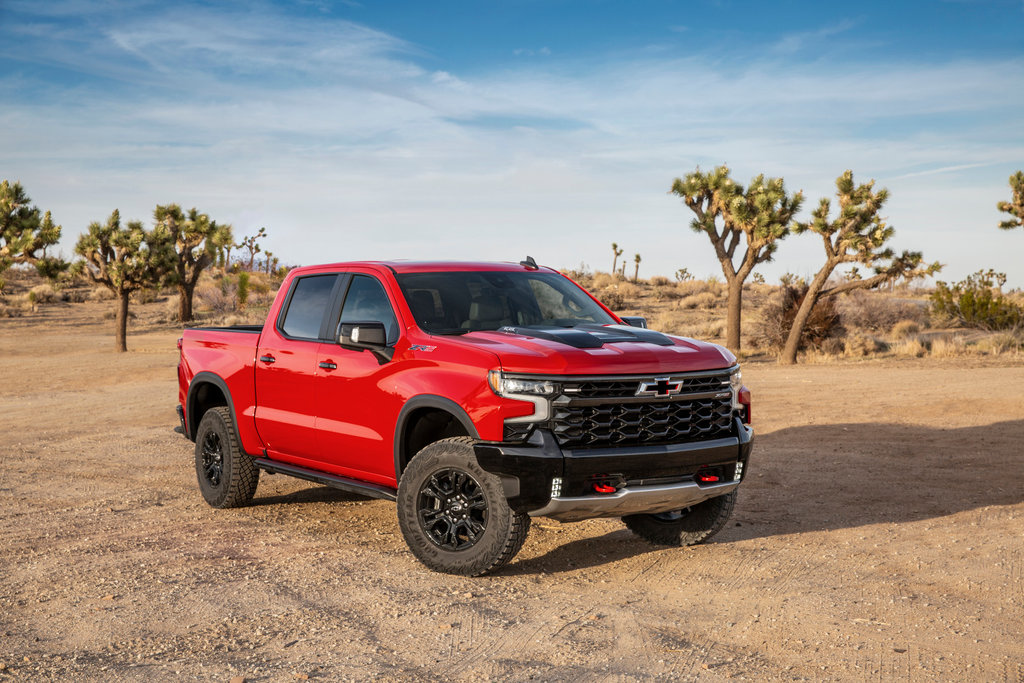
4. Chevrolet Silverado – Multi-Flex Tailgate Innovation
The Chevrolet Silverado’s Multi-Flex Tailgate is one of the most adaptable tailgate designs on the market, offering a total of six different configurations that allow users to mold the rear access point to their specific needs. This is far from a gimmick—it transforms the truck into a multipurpose tool.
The basic configuration functions as a standard tailgate, but with a few quick motions, it can convert into a full-width step, a load stop to secure long cargo, or a raised platform that doubles as a workbench. Chevy’s approach here focuses on maximizing the utility of every square inch, which makes a huge difference for professionals who use their truck beds as portable shops or outdoor enthusiasts who demand flexibility.
One of the standout features of the Multi-Flex system is its folding inner gate, which can drop independently of the main gate to create a tiered platform or a secondary stop to keep cargo from sliding out. This means users hauling long boards, ladders, or even oversized equipment can secure their load without worrying about damaging the tailgate or losing gear.
The fold-down step is wide and sturdy, rated for up to 375 pounds, and it includes a hidden grab handle for added stability. This makes climbing into the bed feel much more secure, especially for those wearing work gear or dealing with wet or muddy conditions. Unlike some step systems that feel tacked on or flimsy, Chevy’s version feels purpose-built and seamlessly integrated into the tailgate design.
Importantly, the Multi-Flex system is easy to operate. There’s no confusing setup or excessive manual adjustment—just simple, effective hinges and releases that click smoothly into place. In higher trims, it can be paired with power operation and tailgate assist, making it accessible with just a push of a button.
While some may argue that the Multi-Flex is more complex than necessary, it’s hard to deny the value of having multiple configurations at your disposal. It allows one vehicle to function in many ways, adapting to jobs, adventures, and errands with equal confidence. This is not just a tailgate—it’s a multi-tool that proves versatility and functionality can coexist with strong, rugged design.
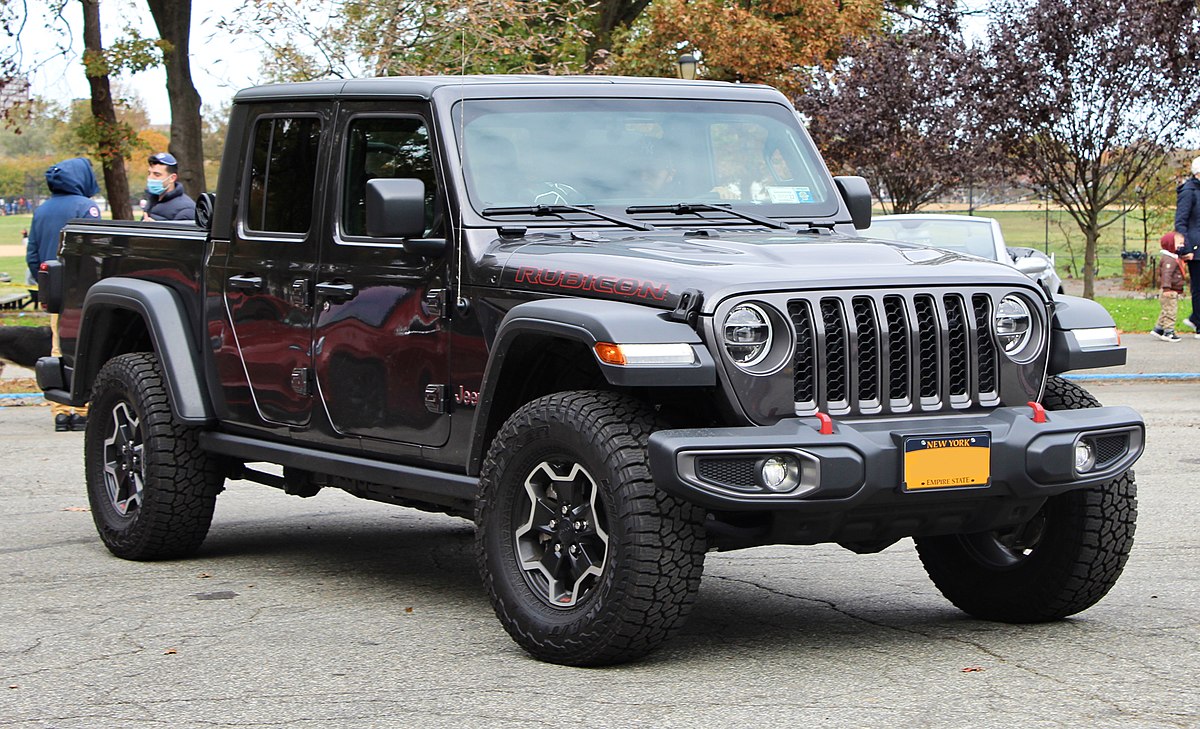
5. Jeep Gladiator – Rugged Simplicity That Works
At first glance, the Jeep Gladiator’s tailgate might seem plain compared to the feature-packed systems offered by other full-size pickups. But what the Gladiator lacks in complexity, it more than makes up for in rugged, thoughtful execution. The tailgate is manually operated and intentionally straightforward, designed for durability and ease of use in even the roughest conditions.
It features a three-position support system that allows the gate to rest flat, close fully, or remain slightly angled for carrying longer loads. This makes it highly adaptable for hauling cargo like plywood, bikes, or even camping gear, without the need for fancy electronics or mechanisms that might fail off-road.
Where the Gladiator excels is in how well its tailgate integrates with the rest of the vehicle’s off-road-focused design. The bed is shorter than that of a full-size truck, but the tailgate opens to provide full access with minimal effort. The reinforced cables and strong hinges mean you can load up confidently, even with heavy gear.
It also works seamlessly with Jeep’s Trail Rail system—a modular set of bed-mounted rails and tie-downs that allow for secure hauling of irregularly shaped items. There’s no mystery to using this tailgate. It’s solid, strong, and does exactly what you expect, without digital gimmickry or unnecessary complexity.
For off-roaders and Jeep loyalists, the Gladiator’s tailgate matches the brand’s utilitarian ethos perfectly. It’s exposed, serviceable, and easily modifiable for those who like to tinker or outfit their vehicle for overlanding. While it doesn’t have power lift functions or built-in rulers, it offers something even more valuable to its target audience—reliability and control.
In muddy terrain, on rocky inclines, or out in the wilderness, that simple, sturdy tailgate becomes a dependable ally. Jeep proves that sometimes, the best design is the one that stays out of your way and just works, every single time.
5 With Awkward Openings
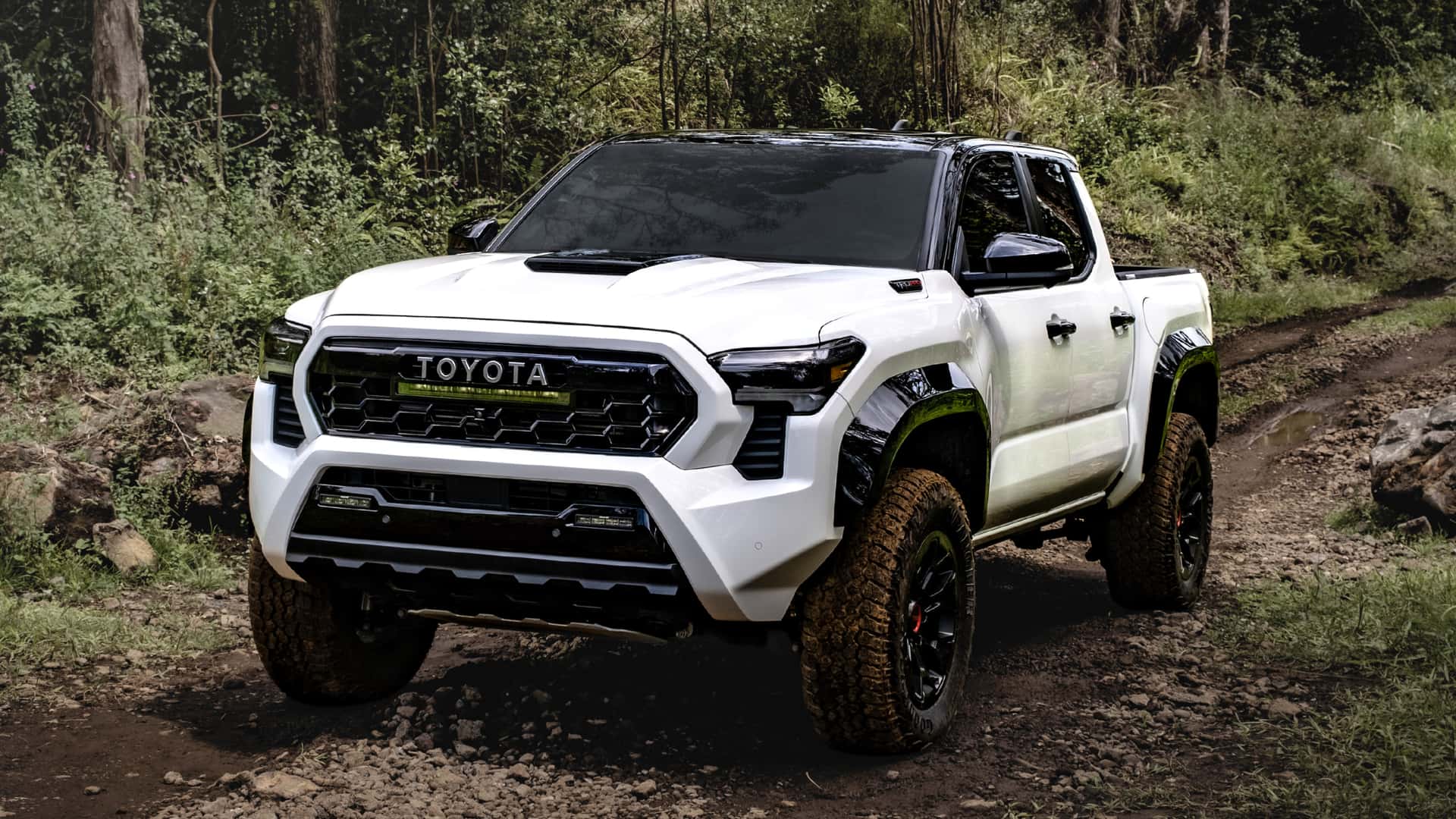
1. Toyota Tacoma – Functional But Failing Behind
The Toyota Tacoma has earned its reputation as a durable and dependable midsize truck, but when it comes to tailgate design, it lags noticeably behind its more forward-thinking competitors. At first glance, the tailgate appears serviceable—it’s a conventional drop-down gate with a soft-open mechanism that cushions the descent. However, the design lacks meaningful innovation or user-centric upgrades.
The tailgate is relatively high off the ground, which makes accessing the bed particularly challenging for shorter users or those with mobility issues. The deep bed and lack of step assistance or alternative access options make loading heavy or bulky cargo a frustrating experience. For a truck marketed to active lifestyle owners, the simple act of reaching into the bed shouldn’t require climbing up or awkward stretching.
Moreover, Toyota has been slow to adopt features that are becoming standard across the segment. There’s no integrated step system, swing-out function, or modular design elements built into the tailgate. While simplicity can be a virtue, the absence of any versatile elements feels like a missed opportunity.
For example, other brands offer multifunction tailgates with integrated work surfaces, fold-away steps, or step ladders. The Tacoma, on the other hand, sticks to a dated format that was acceptable a decade ago but now feels obsolete. Its resistance to change places an unnecessary burden on the user, particularly in real-world settings like home improvement projects, camping trips, or hauling equipment.
The awkwardness becomes even more apparent in tight or urban environments where space behind the truck is limited. A traditional drop-down tailgate requires full rear clearance to open, and in congested parking lots or garage settings, this becomes an immediate hindrance.
The lack of options to access the bed without fully lowering the gate adds to the inconvenience. It’s not just about what the Tacoma’s tailgate does—it’s about what it doesn’t do. Toyota’s legendary reliability is intact, but in terms of functional design, the Tacoma’s tailgate feels like it’s still stuck in an earlier era, asking too much of users in a market where ease of use should be expected.

2. Tesla Model X – Power Meets Impracticality
The Tesla Model X is one of the most polarizing vehicles on the road, thanks to its eye-catching Falcon wing doors and minimalist electric design. But hidden beneath all that flash lies a tailgate that’s deeply flawed in terms of real-world usability. Tesla opted for a full-height, powered liftgate on the Model X—an expected move for a luxury SUV—but the sheer size and upward swing of the gate make it difficult to use in many common situations.
In tight parking spots, garages with low ceilings, or any setting with limited overhead clearance, the tailgate simply can’t open fully. This turns even basic tasks, like unloading groceries or luggage, into logistical headaches. Worse still, the driver often has little choice but to back out or reposition the car entirely just to access the rear.
The power lift mechanism, while elegant in theory, introduces its own set of frustrations. It opens and closes at a glacial pace, which can feel torturous when you’re in a hurry or dealing with bad weather. Although the tailgate does include an interior button and fob control, there’s no quick manual release or traditional handle to speed up the process.
And while the soft-close motion is meant to feel refined, it often lacks the responsiveness you’d want when interacting with a daily-use feature. Users also report inconsistent behavior with the sensors that are supposed to stop the gate from hitting ceilings or obstacles, leading to minor bumps or refusals to open entirely, further compounding its impracticality.
The design of the rear opening itself is also restrictive. The tapered rear roofline and rounded tailgate shape result in a surprisingly narrow cargo aperture. Even though the cargo volume inside the Model X is generous, loading large or boxy items is often complicated by the limited entry space.
For a vehicle that positions itself as the future of transportation, this tailgate feels like a step backward in terms of usability. Tesla has prioritized spectacle and sleekness over everyday functionality. And while the Model X might wow crowds with its tech, its rear access system turns basic utility into a daily challenge, especially for those who bought the SUV expecting practicality to match its performance.
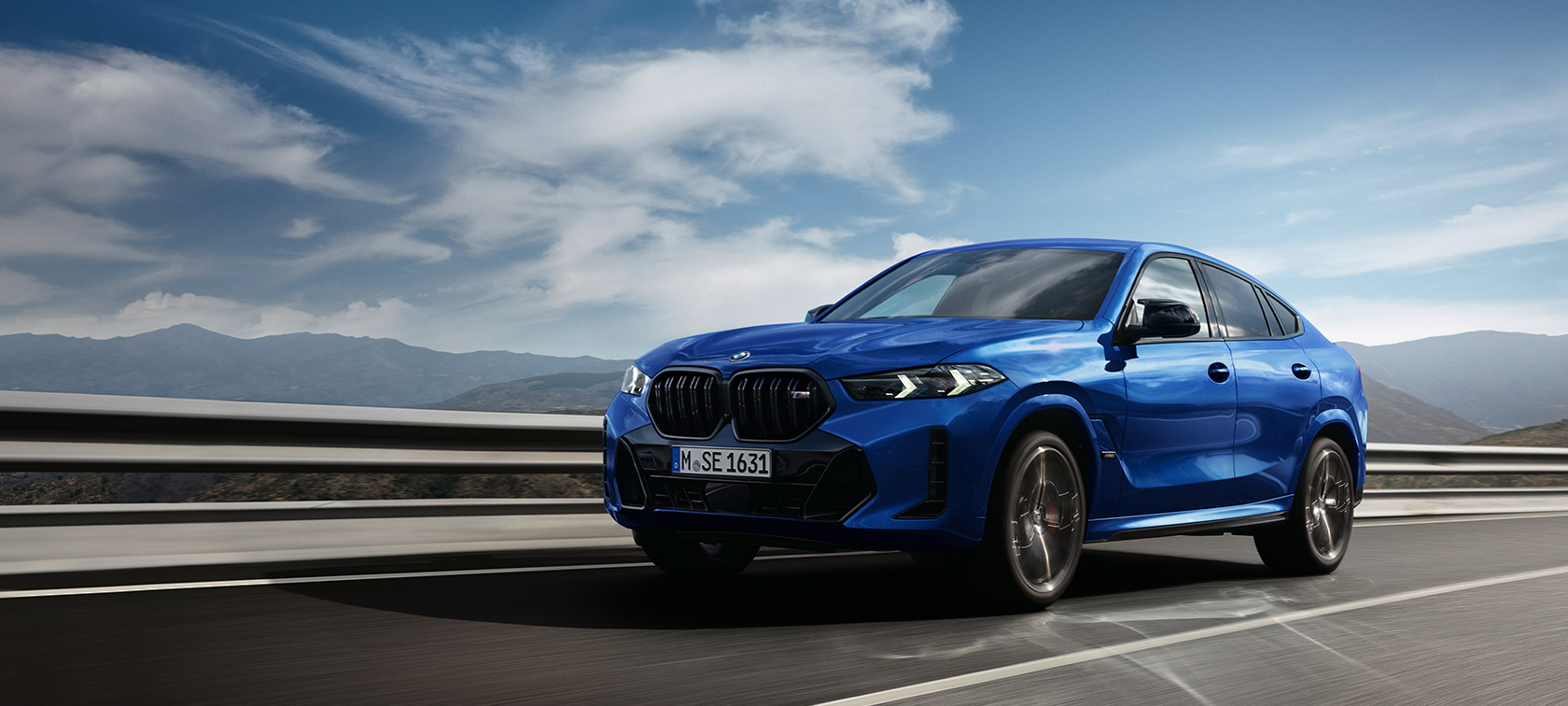
3. BMW X6 – Coupe Curves, Cargo Compromises
The BMW X6 is undeniably bold in its styling—part SUV, part coupe, all attitude. However, that coupe-inspired silhouette has a direct and unfortunate impact on tailgate usability. The rear end of the X6 slopes sharply downward, and this design choice dramatically compromises cargo accessibility.
The hatch opens upwards like a traditional liftgate, but the angle and shape of the opening create a narrow, low-ceilinged portal into the cargo area. Tall, square, or rigid items must often be tilted or angled awkwardly just to fit through the gap. For a luxury vehicle that commands a premium price, these basic limitations feel poorly considered and at odds with what customers expect from a high-end crossover.
Additionally, the load-in height presents its challenges. The tailgate sits fairly high, requiring users to lift items significantly off the ground to get them inside. This task becomes even more cumbersome when trying to fit larger pieces of luggage, sporting equipment, or boxes.
There’s no integrated loading assistance like a step or lowering mechanism, and the lack of a split tailgate option or secondary access through a flip-up window further limits flexibility. The tailgate’s clean exterior lines may satisfy the eye, but they don’t do any favors for ergonomics or practical use. It’s a clear case of style overriding substance, which becomes frustrating over time for owners who rely on rear access regularly.
From a technological standpoint, the power liftgate does function reliably and smoothly, but even this refinement doesn’t overcome the design’s core flaws. BMW markets the X6 as an athletic, luxurious crossover—and while it delivers in terms of power and aesthetics, it fails to live up to that promise when it comes to basic utility.
The tailgate’s shape and structure are mismatched to the needs of people who haul things in their SUVs. Whether you’re a parent managing strollers and groceries or a traveler loading gear for a weekend trip, the awkwardness of the X6’s rear end becomes impossible to ignore. It’s a cautionary tale of prioritizing visual drama over day-to-day convenience.
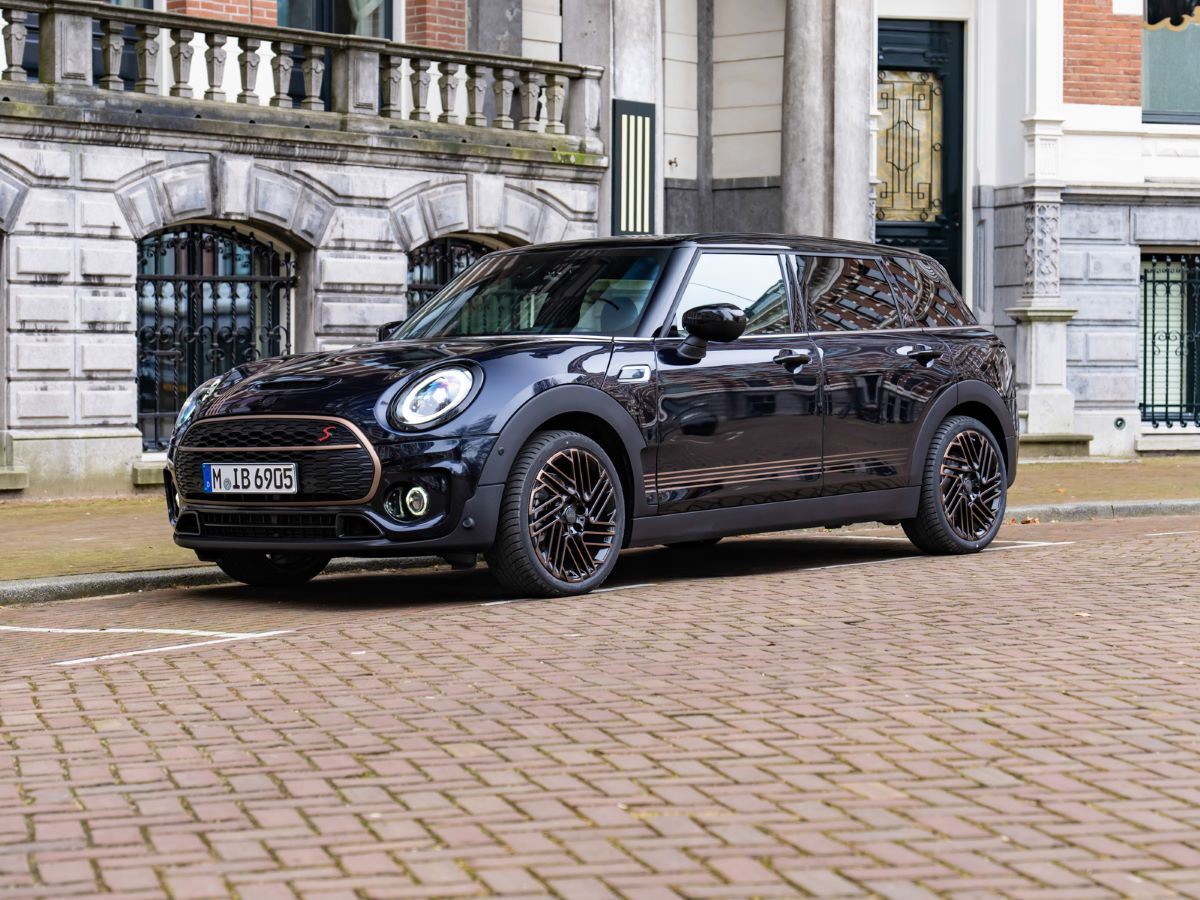
4. Mini Clubman – Quirk Without Function
Mini vehicles have always leaned into quirky British design, and the Clubman might be the most distinct of the bunch, especially in its tailgate approach. Instead of a traditional hatch or SUV-style liftgate, the Clubman features two side-hinged barn doors that swing outward.
At first glance, this design choice stands out as clever and different, but in practice, it’s fraught with challenges. The first and most obvious issue is the space required behind the vehicle. If you’re parallel parked, in a crowded lot, or backed up to a wall or fence, those dual doors simply won’t open fully. This severely limits when and where you can access your cargo and turns everyday tasks like unloading groceries into a test of patience.
Another problem is the visibility and structure of the tailgate itself. The dual doors meet in the center of the rear window, creating a thick pillar that significantly impairs rear visibility. Drivers often complain about the obstructed view when checking their mirrors, and parking or backing up becomes less intuitive.
Moreover, the central seam of the doors creates a physical barrier when loading or unloading larger items. While the width of the opening isn’t small, the split down the middle means anything wide or awkward must be navigated around this dividing line. This can be especially inconvenient when transporting boxes, sports gear, or luggage. It’s a case where the design actively complicates the user’s experience.
Even beyond the awkwardness of the opening, the Clubman tailgate lacks any secondary functionality. There’s no drop-down surface to sit on or extend the loading area, no additional tie-downs or stops, and certainly no power assistance to make things easier. Mini has created something different for the sake of being different, and while that novelty might win over a few diehard fans, it quickly wears thin in daily life.
The tailgate’s design feels like a stubborn refusal to embrace practicality—a choice that prioritizes brand identity over consumer ease. For a car that otherwise balances fun driving dynamics with small-car utility, the Clubman’s tailgate is an unfortunate outlier that feels more form than function.
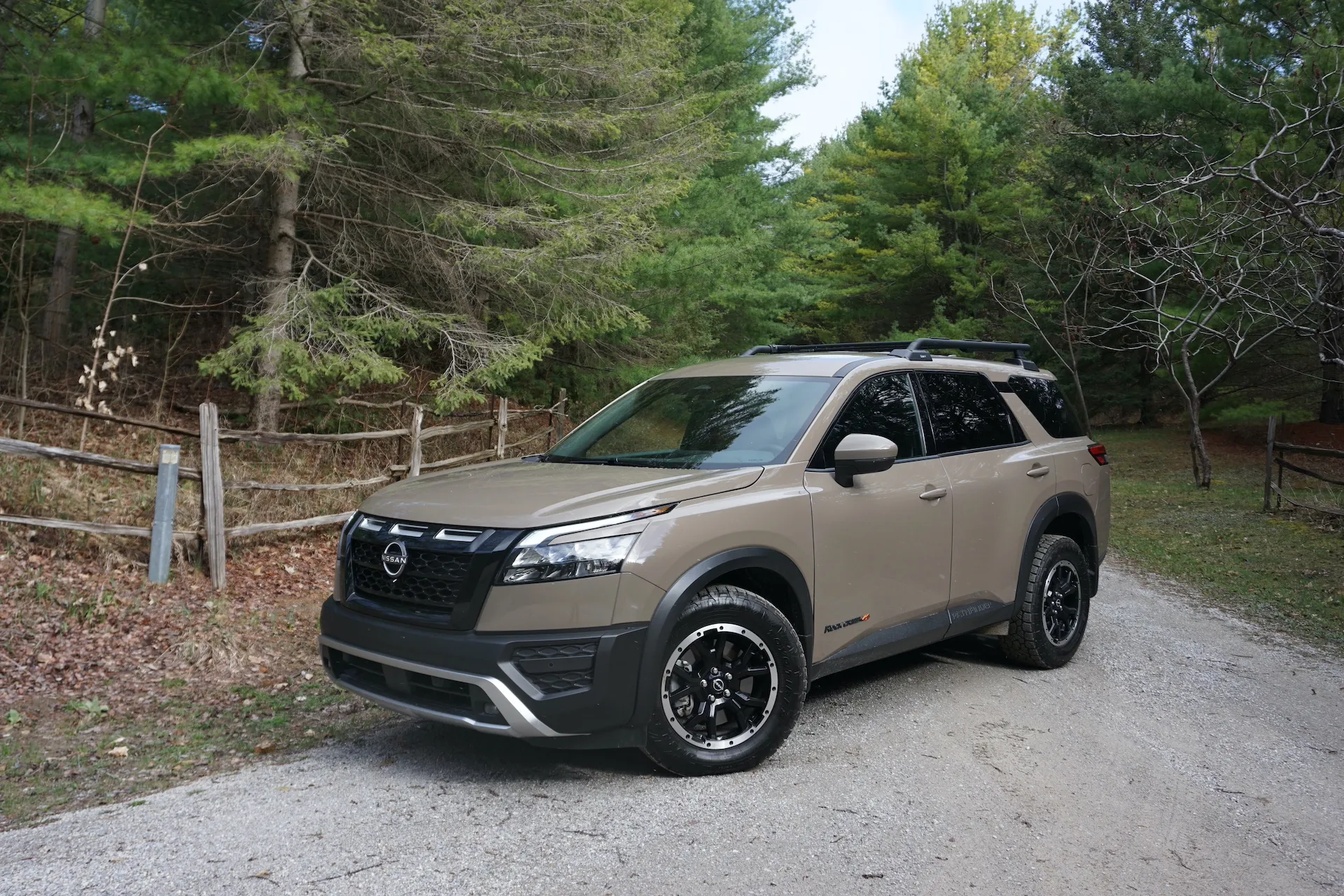
5. Nissan Pathfinder (2013–2020) – Sluggish, Stubborn, and Stuck in Time
The Nissan Pathfinder of the previous generation (roughly 2013 to 2020) had many family-friendly features, but the tailgate wasn’t one of them. This generation featured a powered rear liftgate that was plagued with sluggish operation and unpredictable responsiveness.
Opening or closing the tailgate often felt like waiting for a vending machine to slowly process your request. The lift mechanism moved at a pace that could generously be described as leisurely, and this delay quickly became a nuisance, especially in the rain, snow, or when you’re trying to juggle kids, shopping bags, or sports equipment. The system’s reliability also came into question, with numerous users reporting malfunctions ranging from false obstructions to mid-cycle stops and general unresponsiveness.
On top of its slow operation, the design of the tailgate opening was awkward in terms of loading geometry. The Pathfinder’s rear bumper sits fairly high, and the cargo floor is raised as well, meaning users must lift items higher than in comparable SUVs.
The lip at the entrance adds one more annoying hurdle, requiring extra effort just to get objects fully into the vehicle. Once inside, the cargo space itself isn’t poorly sized, but getting items through the opening, especially larger, bulkier ones, is more cumbersome than it should be. The tailgate offers no drop-down mode, no glass hatch, and no other way to provide partial access. It’s an all-or-nothing setup that feels stuck in an older design paradigm.
Worse still, the Pathfinder tailgate lacks features that have become commonplace in newer models, like foot-activated opening, adjustable height settings, or multifunction hinges. What could have been a simple and convenient access point ends up feeling like a clunky, outmoded gatekeeper.
For a vehicle marketed to families—people who routinely load and unload kids’ gear, groceries, luggage, or strollers—the tailgate design represents a significant usability flaw. Newer versions of the Pathfinder have improved in this area, but for those driving this generation, the tailgate is a daily frustration—a reminder that automation alone doesn’t guarantee convenience. Sometimes, it just makes an old problem more complicated.
Function Over Flash—Why the Tailgate Matters More Than You Think
As automotive technology continues to race forward—integrating AI, electric drivetrains, and ever-evolving infotainment systems—it’s easy to overlook the physical components of a vehicle that haven’t changed dramatically over the decades. The tailgate is one such component.
Yet, as we’ve explored throughout this article, it is often these less glamorous, less advertised features that have the greatest daily impact on owners. A vehicle’s tailgate can either be a seamless gateway to convenience and functionality or an awkward obstacle that gets in the way of simple tasks. And while it may not be the selling point emblazoned in commercials, it’s often the part of the vehicle users touch and rely on the most.
The vehicles that excelled in our breakdown, such as the Honda Ridgeline, Ford F-150, and Ram 1500, understood that a tailgate isn’t just a panel to be opened or closed. It’s an opportunity to engage with the user’s needs. These tailgates introduced innovations like side-swing access, built-in workbenches, retractable steps, and in-bed storage that transform how owners use their vehicles.
They take into account real-life scenarios, whether that means lifting a heavy toolbox, tailgating at a stadium, or organizing weekend camping gear. These vehicles show us that good tailgate design doesn’t just make a truck better—it makes it smarter, safer, and more enjoyable to live with.
Conversely, vehicles like the Toyota Tacoma or Tesla Model X illustrate how tailgate missteps can undermine the utility of a vehicle. Sometimes, these flaws stem from outdated designs that no longer meet modern expectations. Other times, they result from design choices that prioritize aesthetics or gimmicks over practical usability.
A slow, power-only liftgate that fails in tight spaces, a split door that complicates loading, or a rear slope that restricts access might seem like minor annoyances. But over time, they become recurring frustrations that color the entire ownership experience. And in some cases, they even pose barriers to accessibility and safety, especially for older or less physically capable users.
What becomes clear is that tailgate design isn’t just about trucks—it’s about how any vehicle interacts with its cargo space and the user. Whether you drive an SUV, crossover, or utility vehicle, your experience is affected by how easily you can access the rear.
Smart, modular, and thoughtful design is always preferable to rigid tradition or flashy innovation that doesn’t serve a practical purpose. Manufacturers that listen to their customers, observe how vehicles are used in the real world, and iterate accordingly are the ones creating products that truly resonate.
Ultimately, the tailgate is a reminder that great design doesn’t always shout. It doesn’t need a massive touchscreen or a self-parking demo to prove its worth. Sometimes, it’s in the quiet ease of operation, the sturdy feel of a step, or the satisfying click of a well-designed hinge.
In the grand orchestra of automotive features, the tailgate plays an essential role—often in the background, but never without significance. So, the next time you consider a new vehicle, don’t just look under the hood or behind the wheel—look at the back, too. Because a tailgate, when designed right, can open the door to a much better driving experience.

